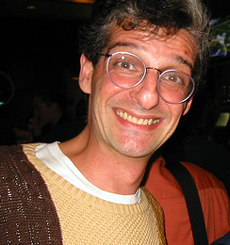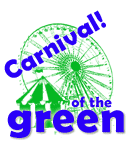Wednesday, January 11, 2006
Science of Fiction, or, why we still read Sherlock Holmes
I don't know who runs the website for the n+ magazine, but it is someone inept. Thus, link to the article I want you to read is actually a link to the front page, which is going to change at some point in the future, so my link will become obsolete! Grrrrowl! Thus, you may actually have to search around for the article On Franco Moretti by Elif Batuman from Issue Three. Unfortunately, the page with the Table of Contents for the Issue Three has no links to the individual articles. Very annoying. (Thanks johnnybutter for pointing me to the article).
Adventures of a Man of Science - Franco Moretti’s Graphs, Maps, Trees: Abstract Models for a Literary History
The article is very long, but I urge you to read it. This guy, Moretti, is trying to apply scientific methodology to the literary criticism and to understanding of the evolution of literature. His new book contains three parts, one focused on Time, one on Space, and the third on Evolution (genealogy/phylogeny, mechanism/selection and explanations of adaptive function). There is also a Postscript written by a population geneticist studying human evolution (Alberto Piazza), commenting on the evolutionary ideas of the third chapter. I will definitely order the book and read it.
Bloggers will immediatelly grasp what he is up to - a distributed, Wikipedia-like thinking:
"The most liberally construed canon of Victorian English novels, Moretti continues, runs to about two hundred titles: yet “there are thirty thousand 19th-century British novels out there, forty, fifty, sixty thousand—no one really knows.” Ars longa, vita brevis—and, even if we lived forever, it still wouldn’t be a good use of our time to closeread every book ever written, because literature isn’t “a sum of individual cases” but “a collective system,” and we can’t grasp it by simply doing more of the same thing.Moretti himself is, apparently a very interesting figure:
How, then, are we to obtain, given our meager human life spans, a godly cognizance of every last, lost Victorian novel? Moretti calls upon comparativists to practice “distant reading,” elsewhere “the quantitative approach”: a form of collaborative scholarship relying on giant utopian repositories of shared information, such that the study of literature will eventually be conducted “without a single direct textual reading.” Instead of theology, we need “a little pact with the devil”; we surrender the reading of individual texts, and in return we will get: “concepts.”"
"Moretti, a mythopoeic figure, generates around himself a dense network of folklore and apocrypha. Franco Moretti, it is said, has hired five graduate students to retype the first paragraphs of every Victorian novel ever written; Franco Moretti is coauthoring a book on morphology with a team of Canadian ornithologists. Franco Moretti, who “doesn’t believe in” word count, prefers instead to calculate the average number of characters per word in his students’ papers, and anyone with an average of six or higher gets an F.It is not fair use for me to copy and paste big chunks of the article (although it is quite long) - wade through that website and find it - but here is the introductory explanation of what the three chapters are roughly about:
At Stanford, I once overheard two of my classmates at a department party, drinks in hand, debating the question of Moretti’s office hours. “I wonder whether he’ll be in this Friday,” mused the first student. “I need to show him my reading list.”
“I happen to know,” said the second student, a bit importantly, “that he’s going to be on campus at midnight on Wednesday, to be teleported to Sweden.”
Teleported to Sweden, she said, and nobody raised an eyebrow. Indeed the image glides easily before the mind’s eye: in the moonlit Stanford Quad, before the fake Spanish church, under the gigantic reproduction of Roselli’s Last Supper, Franco Moretti shimmers briefly in the ether and rematerializes, that very instant, in Uppsala."
"The first chapter, “Graphs,” charts the rise and fall of novelistic production in Britain, Italy, France, Spain, Japan, Nigeria, and India—and three centuries of novels come out resembling the cardiogram of a single heartbeat. Moretti correlates the rises and falls to external factors, ranging from the biggest Marxist generalities—the emergence of the novel as a “regular commodity” in late capitalism—to small historical particulars—the effect of the Sepoy Rebellion on the rate of importation of British novels into India after 1857.And here is the beginning of the part about Sherlock Holmes that I found so interesting:
In the next chapter on “Maps,” we are teleported back to Moretti’s home turf, the Victorian novel—more specifically, to early 19th-century British village narratives, represented by Mary Mitford’s Our Village and John Galt’s Annals of the Parish. The particulars are not entirely accessible to someone who lacks a background in British village narratives, but they are soon drafted into the service of an exciting methodological proposal: namely, that “literary sociology” should be a means of “deducing from the form of an object the forces that have acted upon it.” Literary maps, then, are a visualization of these forces: in the village narrative graphs, which resemble bull’s-eyes, we see the conflict between “the perambulatory narrator” and “the gravitational pull of the village”; in Balzac, the conflicts between “old wealth” and “ambitious petty bourgeois youth” form various triangles straddling the Seine. Each pattern, Moretti suggests, is “a clue—a fingerprint of history.”
Fingerprints and clues assume a central importance in the third chapter, which features morphological “Trees” of two formal literary devices: clues in detective fiction and “free indirect discourse” (FID) in the novel. The trees are designed to apply Darwin’s laws of evolution to the history of literature. The tree of clues shows the presence or absence of clues to be the determining factor in the survival of a detective story in the turn-of-the-century literary marketplace—just as a certain morphological feature might determine the survival of a living species in a given environment. In Moretti’s second tree, various international novelists are distributed on right- or left-hand branches, depending on whether their use of FID tends more toward the second or the first person. Moretti suggests a relationship between the nationality of the writer and his or her use of FID, explicable by Darwin’s theory of “allopatric speciation”: when a morphological structure migrates to a new environment, it must mutate in order to survive."
"The Darwinian thread is taken up in the third chapter, which opens with an evolutionary mystery: how can we understand the survival of Sherlock Holmes, as opposed to the failure of the other fictional detectives of his time? Again, a triangle: instead of Conan Doyle and his readers—Conan Doyle, his rivals, and his readers. In search of answers, Moretti and his team of graduate students dove into the archive of Victorian detective fiction and resurfaced with 108 long-forgotten rival texts—which, after appropriate analysis, yielded the secret of their own extinction: their authors didn’t know how to use clues.I'll let you know when I read the book if I have any additional thoughts.
Some rivals omitted clues altogether, in favor of such alternative truth-divining devices as hypermnesiac dreams, unsolicited confessions, and, in one case, the chance autopsy of a shark, which turns out to have swallowed a message in a bottle mentioning the identity of the true killer. Other rivals, who did include clues, used them wrong: thus one detective, having deduced that “the drug is in the third cup of coffee,” proceeds to drink the coffee.
The case of the botched clues is a fascinating find, and brilliantly articulated. It brings to mind all those early detective works in which the killers turn out to be monomaniacs, opium-eaters, or giant apes—and the deductive value of the clue is negated by the criminal being precisely someone whose behavior is not bound by the law of (human) rationality. Moretti’s Darwinian explanation for such phenomena is that the fiercely competitive literary market drives authors into “crazy blind alleys,” causing them to produce new forms at random. Most come out defective and become extinct, but some are, miraculously, fit, and these survive.
This explanation is not entirely satisfying, especially compared to an earlier article, “The Slaughterhouse of Literature” (2000). In this piece, Moretti addresses the problem that the clues in the Sherlock Holmes stories are not decodable by the reader—whereas today the decodability of clues is “the First Commandment of detective fiction.” “Conan Doyle gets so many things right,” writes Moretti, so how is it that he can “lose his touch” at the last minute? Moretti eventually concludes that the unintelligibility of the clues is a deliberate means of emphasizing Holmes’s omniscience: if the reader could decode the clues, Holmes would no longer be a superman. Conan Doyle, in short, misuses clues “because part of him wants to.”
In “Trees,” Moretti passes over the “wants to” element—presumably to underscore the element of randomness. But I think he had it right the first time. Science is necessary but not sufficient for Holmes’s genius. After all, Dr. Watson is a good scientist, and conscientiously uses the “deductive method,” only to arrive, time and again, at the wrong conclusion—as the reader is guaranteed to do. Holmes’s use of clues strikes an incredibly delicate balance: the mystery is always solved using rational rules, but this doesn’t mean the solution is available to just anyone. Holmes is essentially aristocratic: things come to him effortlessly that never come to others at all.
Perhaps the Holmes stories are not half-baked versions of the “correct” mystery story, but a different kind of mystery story, wherein the nondecodability of clues is not a bug, but a feature. Conan Doyle was writing during the conquest of England by industry and rationalism; perhaps his readers wanted stories about the kinds of magic that are possible within the constraints of science. Holmes categorically rejects the supernatural, not in order to show that the new, rational rules preclude magic, but in order to show that you can still have magic even if you play by the rules. Decodable clues came a “generation” later, with Agatha Christie and the first World War, and became more rigorous after the second—by which time readers wanted to be reminded that the world was still rational. Standards of decidability are now higher than ever—but it’s clearly not 100 percent, because then there would be no mystery. And even in today’s grittiest, bluest-collar American detective heroes we can find vestigial traces of aristocracy, esotericism, Old Europe: the newest detective on Law & Order wears Italian suits and $300 silk shirts, and the best-seller lists of the past ten years have regularly featured the adventures of an LAPD sleuth called Hieronymous (“Harry”) Bosch."
Update: Thanks to GreenSmile in the comments, you can read more and see a lot of graphs from the book here.
Update 2: There is a lot of discussion on this book over at the Valve. The link (thank you Jonathan) is to the archives of the whole event, with the oldest posts on top and most recent posts on the bottom of the page.
Update: My copy of the book just arrived.




















